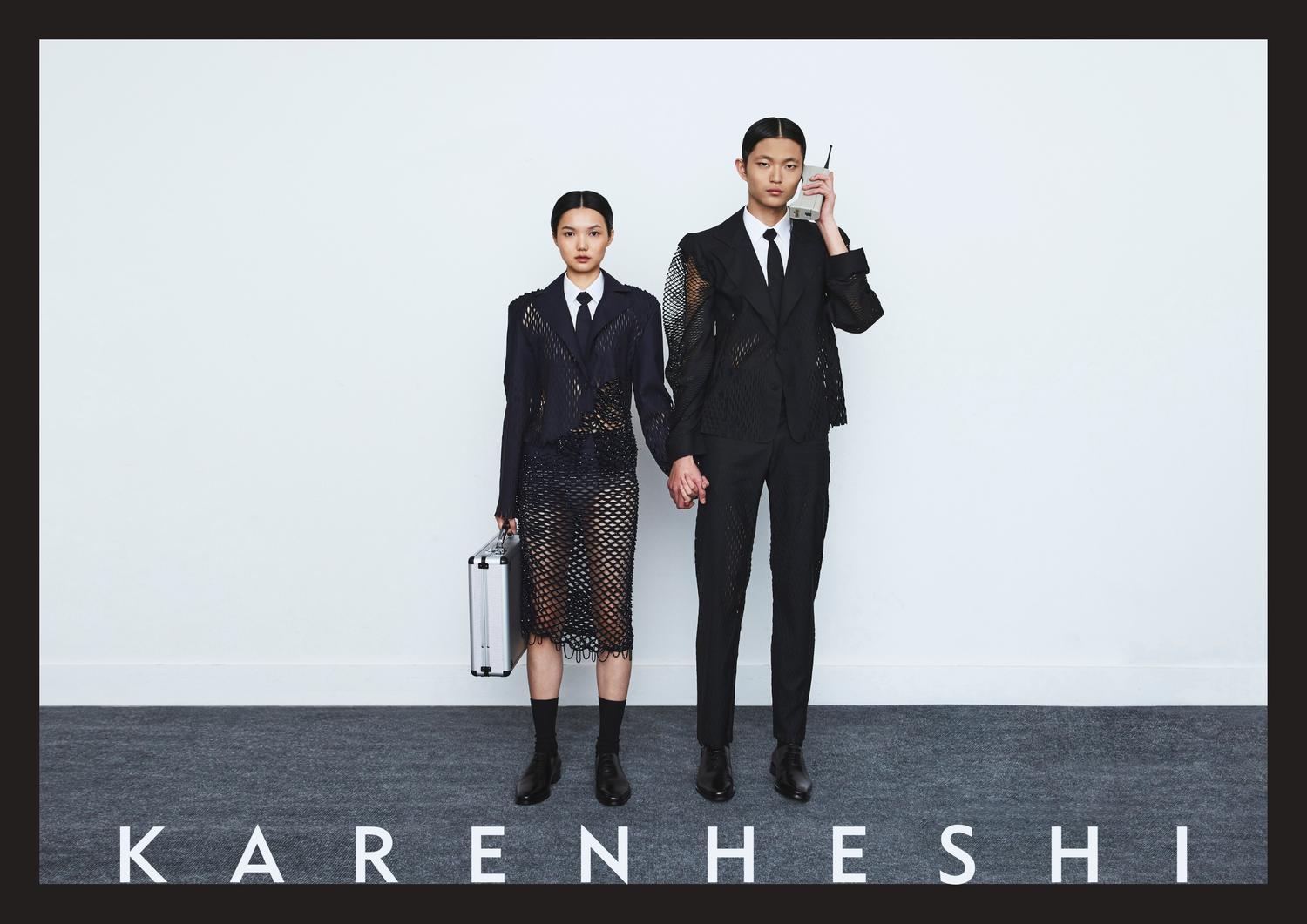
Karen Heshi’s “The Performing Suits” collection is all about being more aware and conscious about the performative function of fashion. Fashion and clothing are inseparable from discourses of identity, society, and politics. Everything we wear is a medium for social commentary, manifesting who we are as people. To let uniforms and suits restrict us is, therefore, to sacrifice our identities and freedom for the sake of assimilation.
Karen Heshi reinvents the sartorial structure of the three-piece suit, making the clothing more comfortable and flexible while allowing the wearer to still look professional. This challenges the assumption that we must accommodate the garments we wear for the sake of social performativity when it should actually be the other way around.
“Suits sculpt our body, which controls us subconsciously, starting from our body posture.”
Karen heshi
What interested you about the way uniforms define or control our bodies?
A: Uniforms are made either for identification or functionality purposes. Some control our movements and some help enhance our performances. I was fascinated that it’s either one or the other. Why not two together? As we all know, suits are examples of identification in the business world. Suits sculpt our body, which controls us subconsciously, starting from our body posture. For example, when we wear a suit, the way we button our shirts or tighten our ties towards our neck, we naturally bring our shoulders back, lifting our chest out and our chin upwards. It is funny how just by putting on a uniform, we immediately embody a different persona.
“… we are expected to appear ‘appropriate’ for the occasion or act ‘professionally’ within our roles, but when it takes away freedom, the system turns dark.“
Karen Heshi
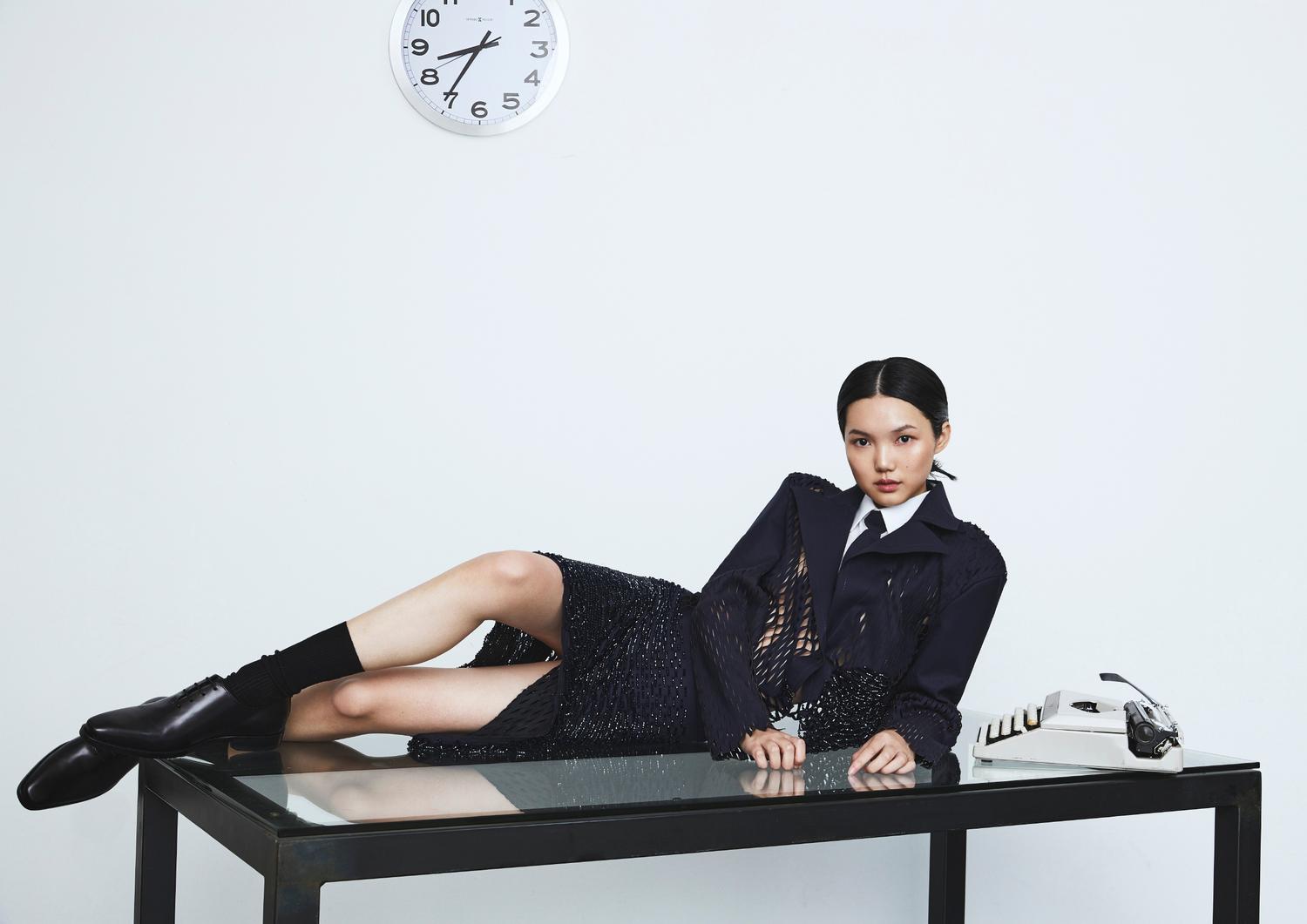
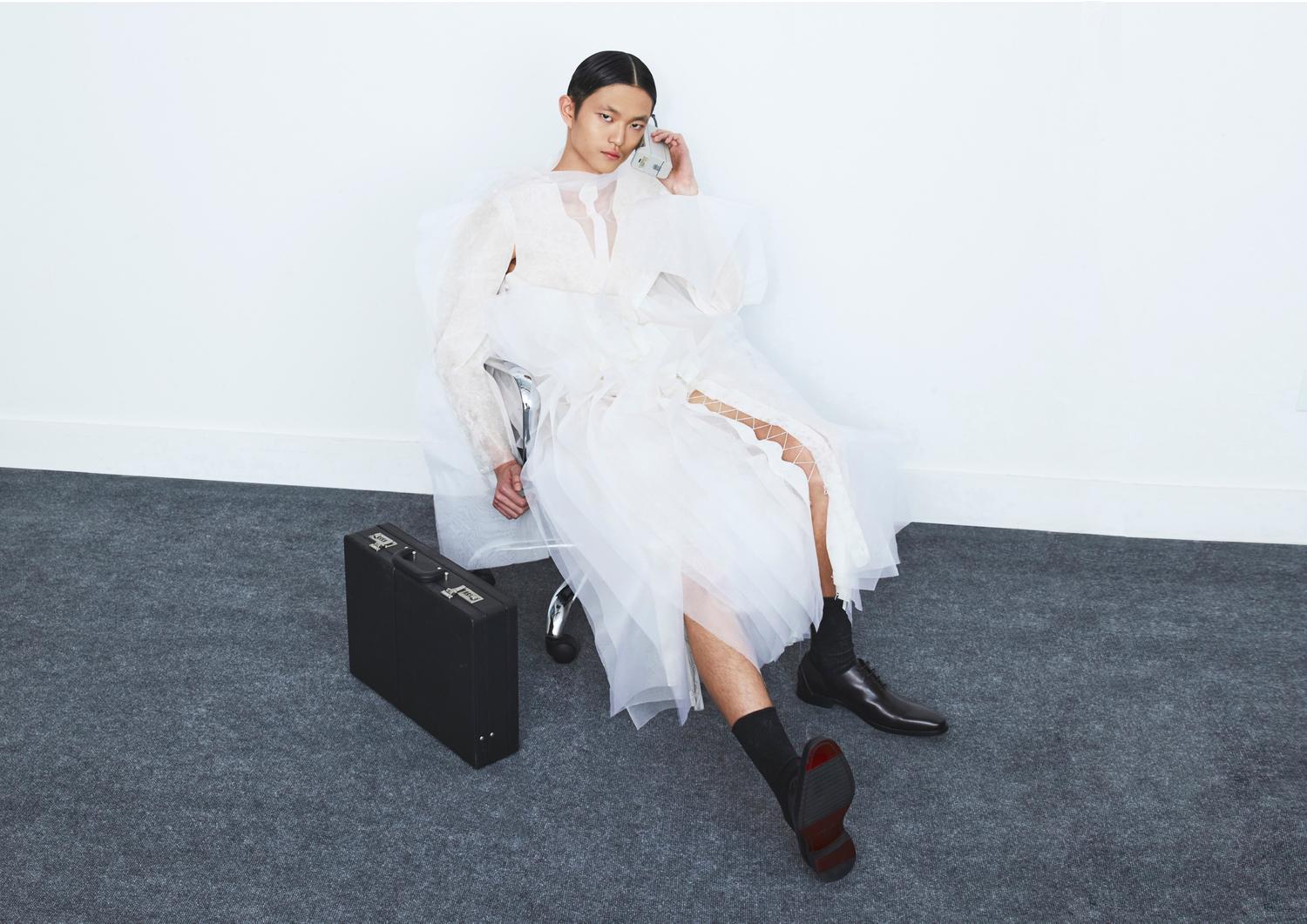
The name of your collection is intriguing, “The Performing Suits”. Do you mean that suits assume a performative role or is it signifying that the suits in your collection are meant to ‘perform’ on the body?
A: The title of my thesis “The Performing Suits” came from the beginning part of my research. To my finding, performance has become an integral part of our everyday lives, as we continue performing either in digital life or in reality. Every action, word, or photo we post, is being watched and judged, like we are under constant surveillance. In reality, people have expectations, and these expectations shape and codify us on how we should perform in front of the people around us every single day. Society commands us to perform flawlessly; we are expected to appear ‘appropriate’ for the occasion or act ‘professionally’ within our roles, but when it takes away freedom, the system turns dark. This inspired me to create a collection to help people perform more effortlessly in work settings. I visualize this concept by experimenting and breaking down one of the world’s most iconic and traditional uniforms: a three-piece suit.
I saw many photographic references in the first few pages of your portfolio that are situated in the past. What is it about the uniforms from the past that inspired you?
A: All the uniforms in these photos are all related to suits. The suit is a strong symbol of authority and professionalism, which can be traced back to the 1660s when King Louis XIV of France first made an official dress code denoting that all men must wear a three-piece suit to court. This is really how it evolved to become today’s formal business attire. It is why we see suits everywhere in schools, orchestras, government, and business settings.
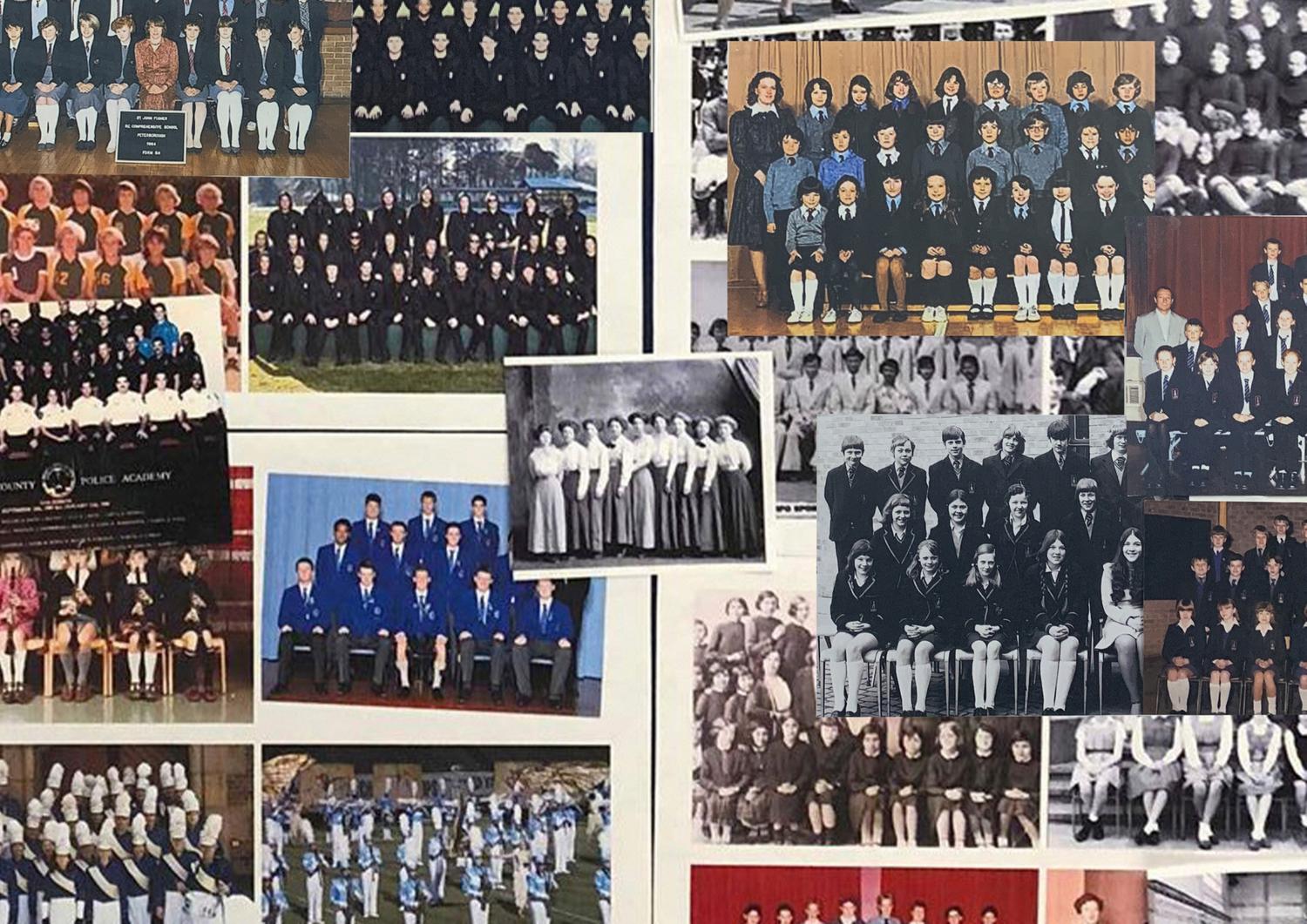
“Why must we feel the need to categorize ourselves in favor of others’ understanding?”
Karen Heshi
I was fascinated by the way you experimented with the structure of the suit, like the blazers with the slashed back, in your portfolio for the collection. Tell us a bit more about that specific experiment!
A: Well, during the making of the traditional suit, since the fabric is woven, the most natural posture when wearing a suit would be when we are standing upright- that is when we see the suit without any creases or wrinkles. I wanted to create a fabric that allows the suit to hug the body of the wearers and allows them the freedom to move without any tension on the center back like the traditional suit. Since the technique of the fabric allows the suit to stretch, I could essentially take away the unnecessary elements like vents, darts, and seam lines that would appear in the traditional woven suit.
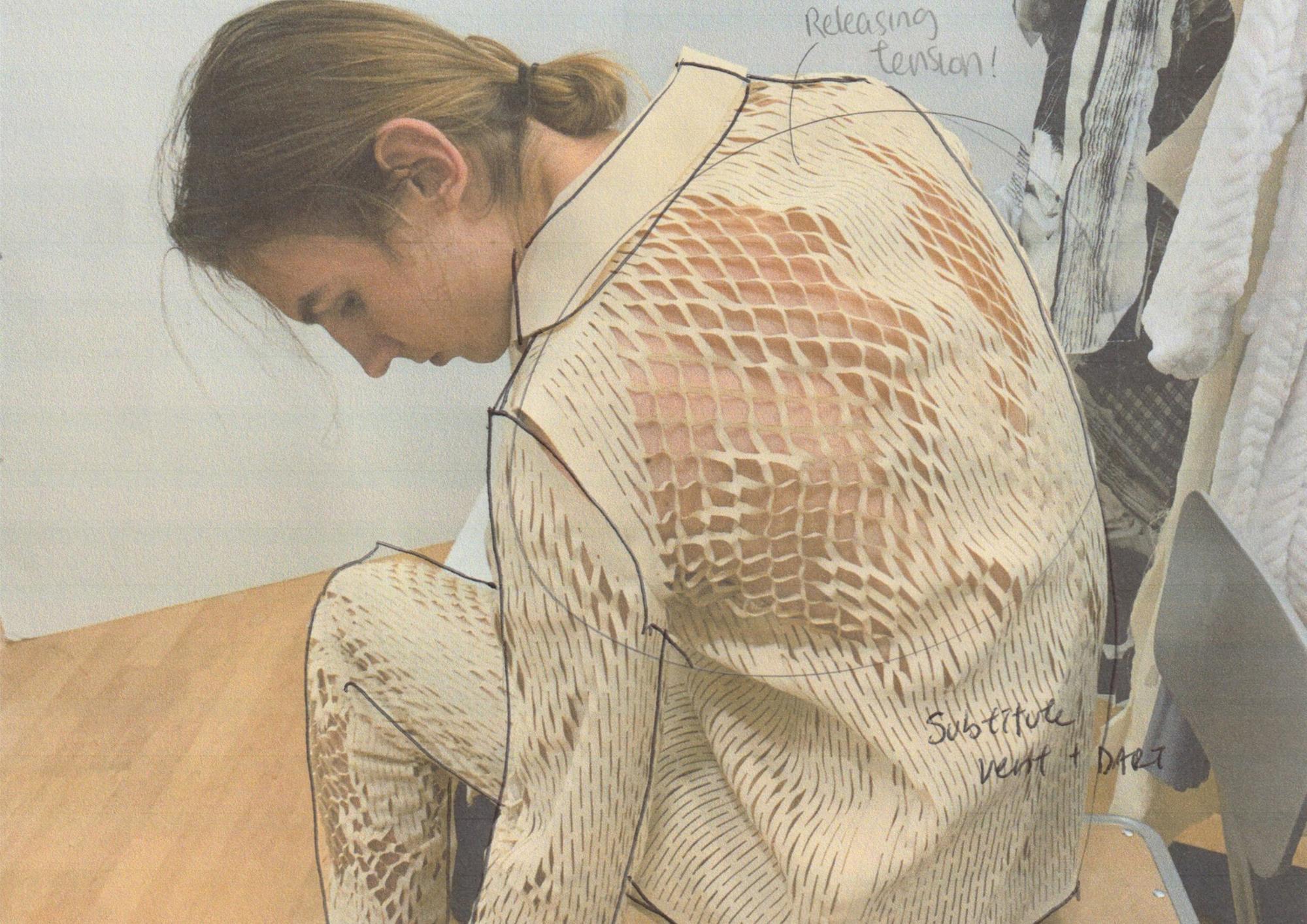
I got a sense of gender fluidity or gender neutrality in the looks that you have created. Does this have an intention or a purpose behind it? Or do you reckon it’s just due to the gender neutrality of the suits themselves?
A: There are always rules, rules, rules, this society constantly reminds us to follow the rules; boys wear pants, girls wear dresses. We are taught to be dressed a certain way since the day we are born. If Louis XIV did not make an official dress code for men to wear a three-piece suit to court, imagine what we would be wearing today. Why must we feel the need to categorize ourselves in favor of others’ understanding? Some uniforms are gender-neutral, like diver suits or astronaut suits, which focus on the function of the garment rather than its gender.
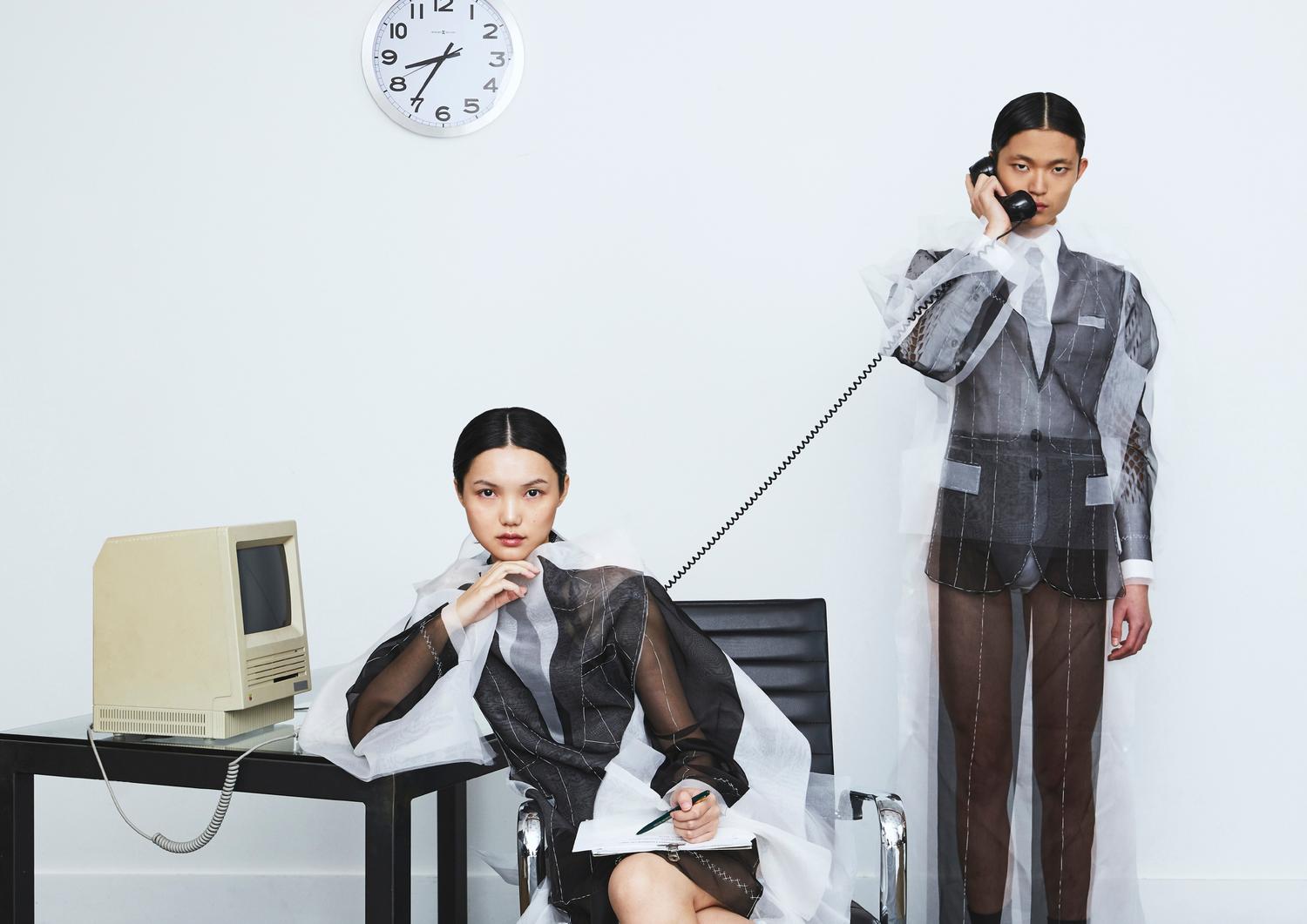
I find the use of reflective powder and the organza form especially unusual yet creative. Where did you get the inspiration from?
A: This generation is growing up through the digital age. Everything is for selfies, for self-presentation, and society. The reason why suits are traditionally in toned-down hues is so that the wearer does not stand out when working in the collective business setting. However, the reflective materials will allow the suit to stand out when needed. I have functionally used reflective yarns, crocheting them to hold the suit in place in a way that allows the suit more structural flexibility while creating new forms depending on how the audience perceives it. With this practice, the suit is constantly changing and transforming.
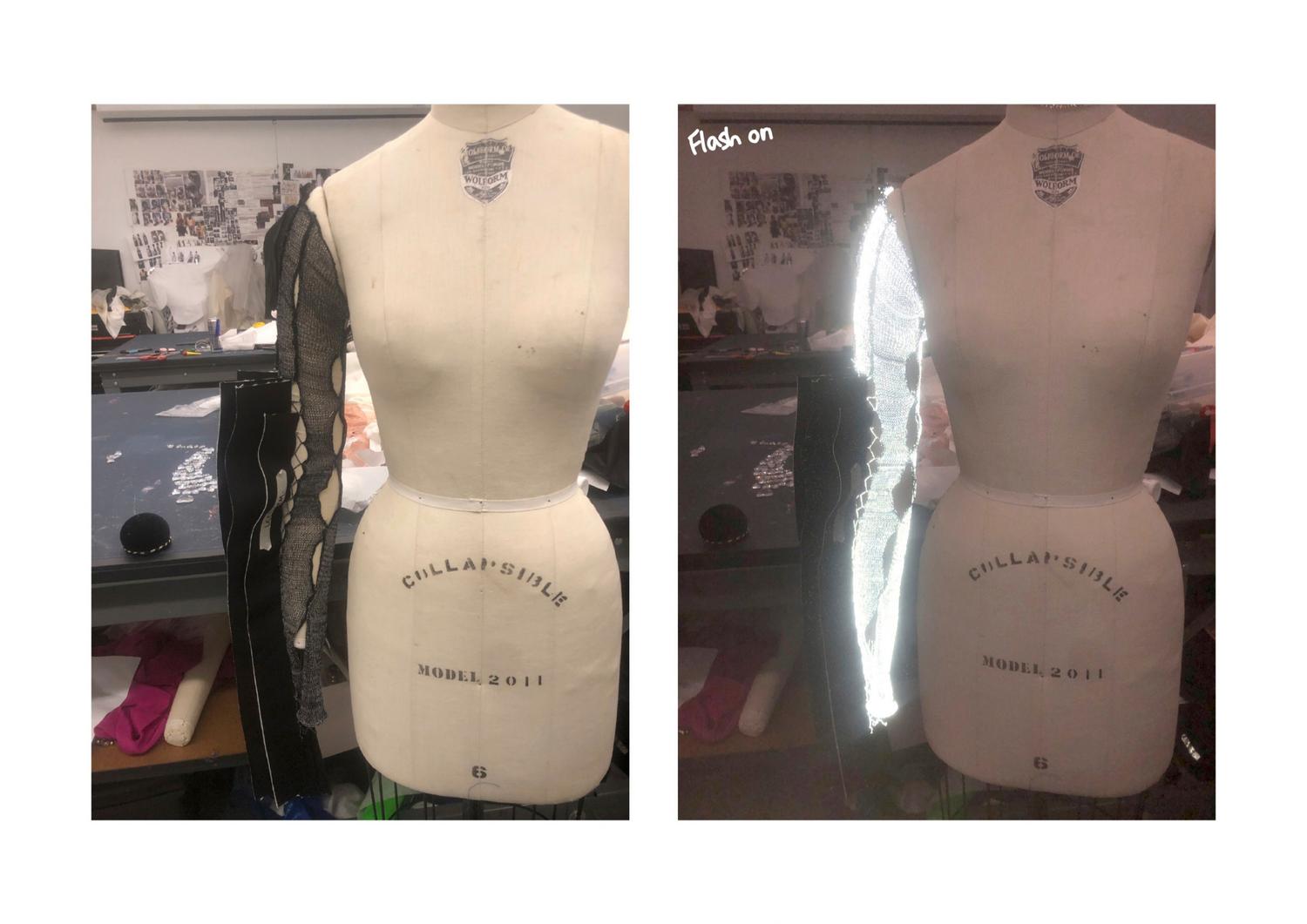
You further explained that “the suit will only merge out when being under surveillance” when this method is used. What did you mean by this?
A: My last garment is an invisible suit, because I have created a technique that allows to print the suit invisibly within the gown, which literally means the suit will only merge out of the gown when being under surveillance (flash).
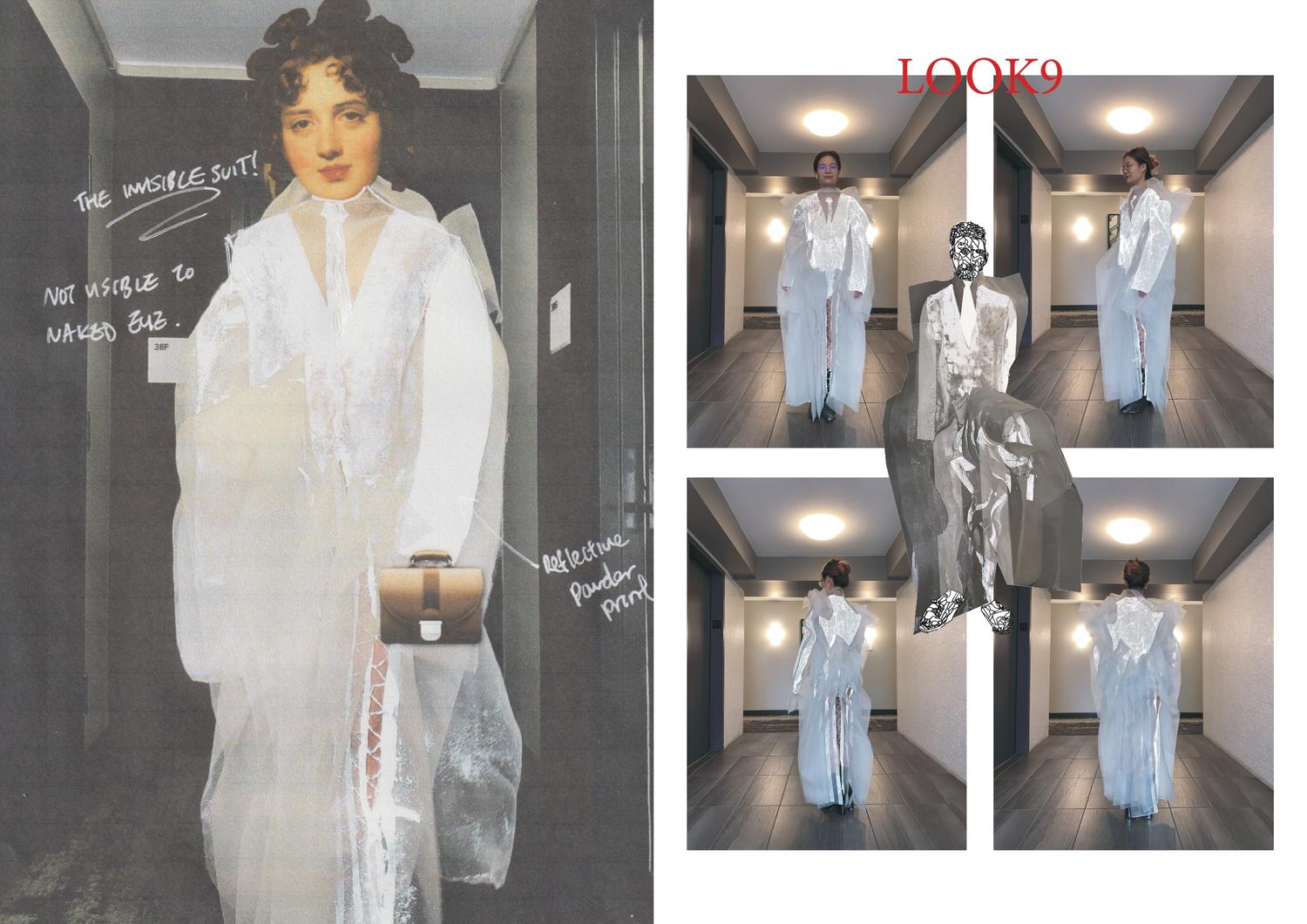
“my huge passion for creating this collection was also because of my mother.”
Karen heshi
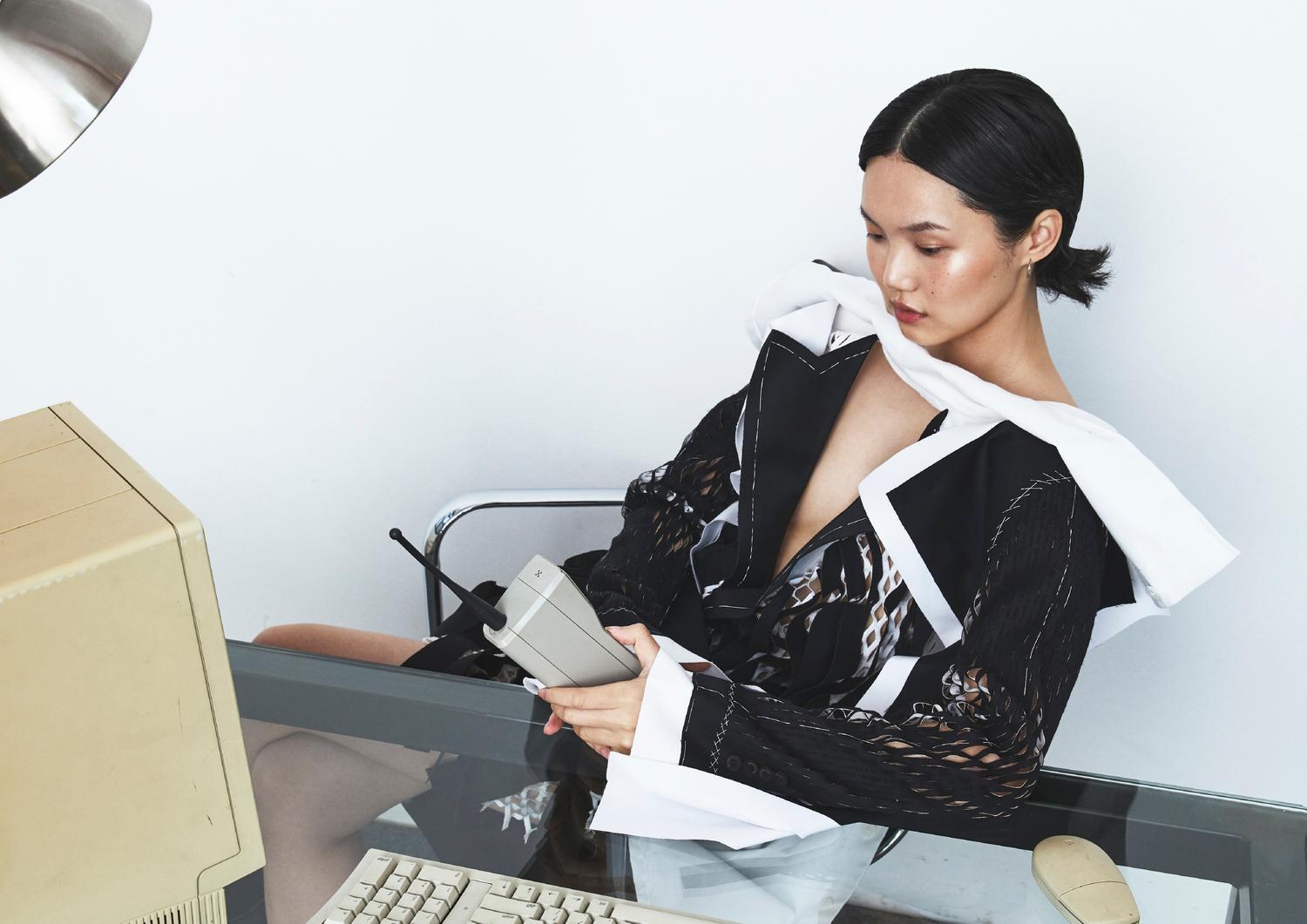
When I looked through your recent Instagram feed, I noticed that most photos were taken in an office setting. Of course, this has a natural association with the uniform, but does the office concept relate in a significant way to your collection or your fashion philosophy in general?
A: My parents own a small business, and after my father left my mother, it was up to her to assume two roles, CEO of the company and a mother of 5 children. She would come home after work still dressed in business formal, and rush into the kitchen to cook dinner for the family. This office set reminds me of a lot of her when she is at work, so my huge passion for creating this collection was also because of my mother. I want to create a collection for my mother to help her perform easily when switching between roles.
If you absolutely had to choose a few favourites from the collection, which pieces would you pick and why?
A: Hahaha, each look is all quite different and holds different techniques and textiles, but if I had to choose one, I would pick the 2nd Look, because I could vison my mother wearing it and making fun of me for making such a collection.
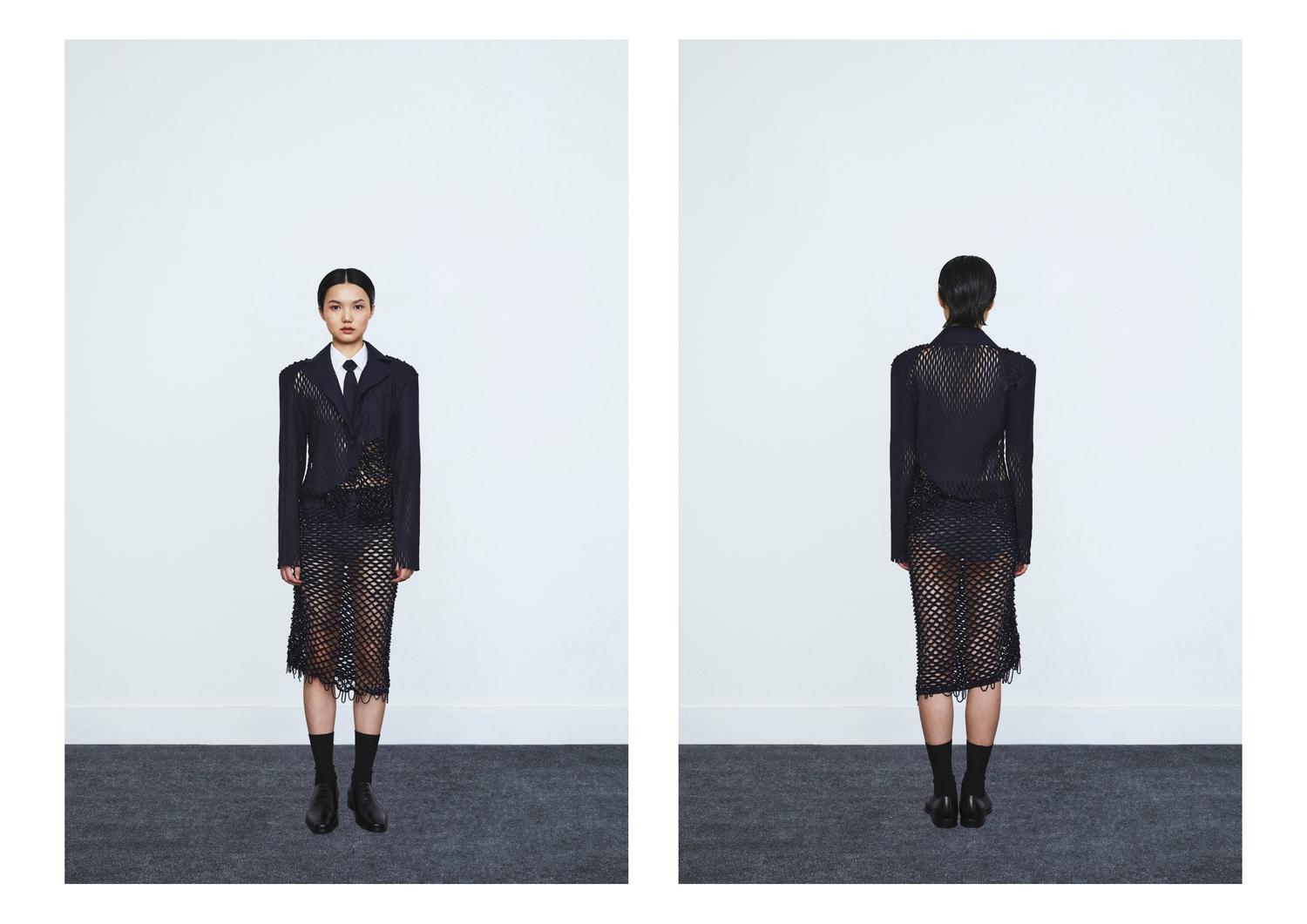
Are you working on any upcoming projects or collections at the moment?
A: I plan to broaden my techniques onto a wider range of garments not just focusing on suits but the whole wardrobe.
Would you let me interview you again when your next launch releases? 😊
A: Hahaha! Sure, definitely!
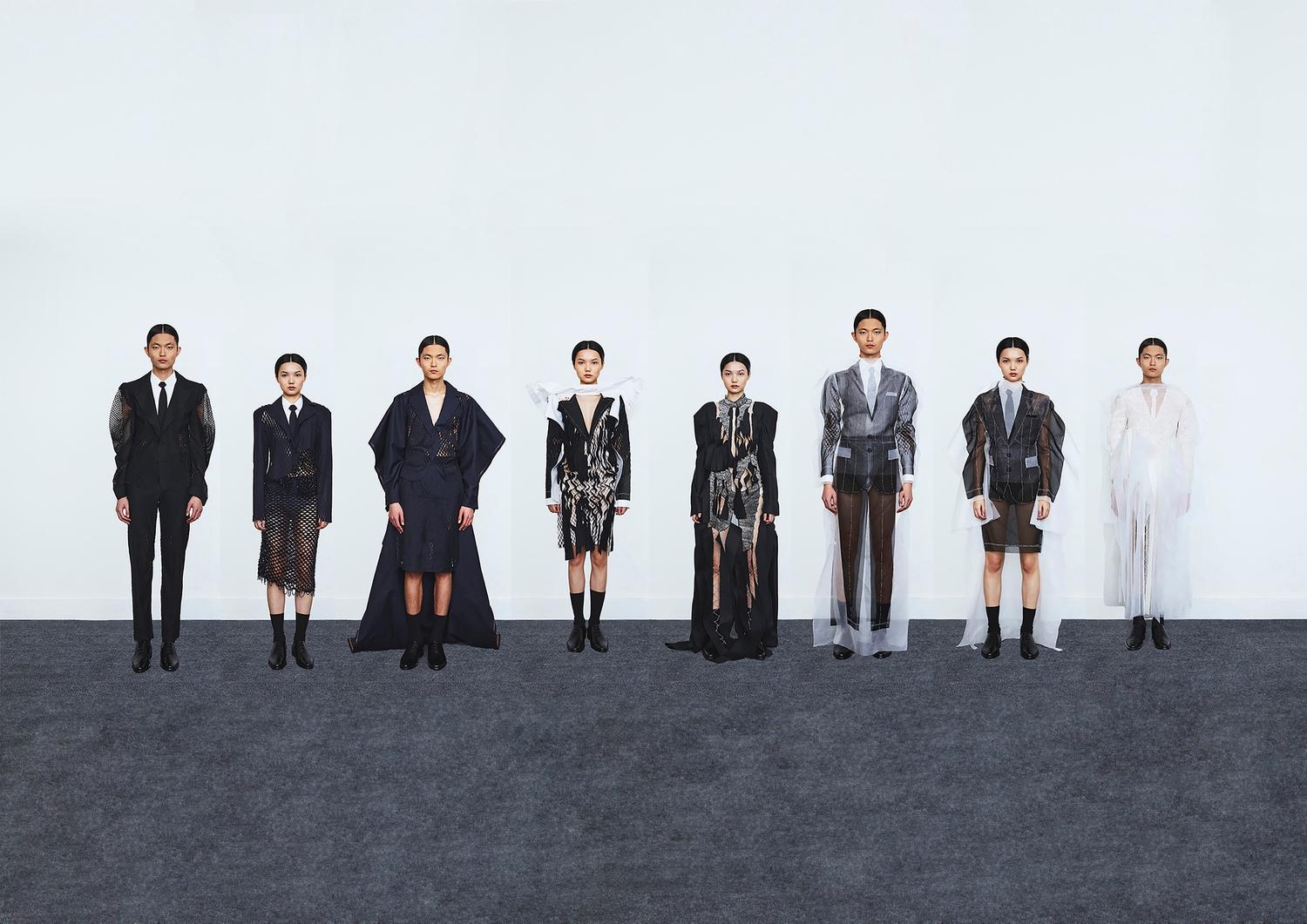
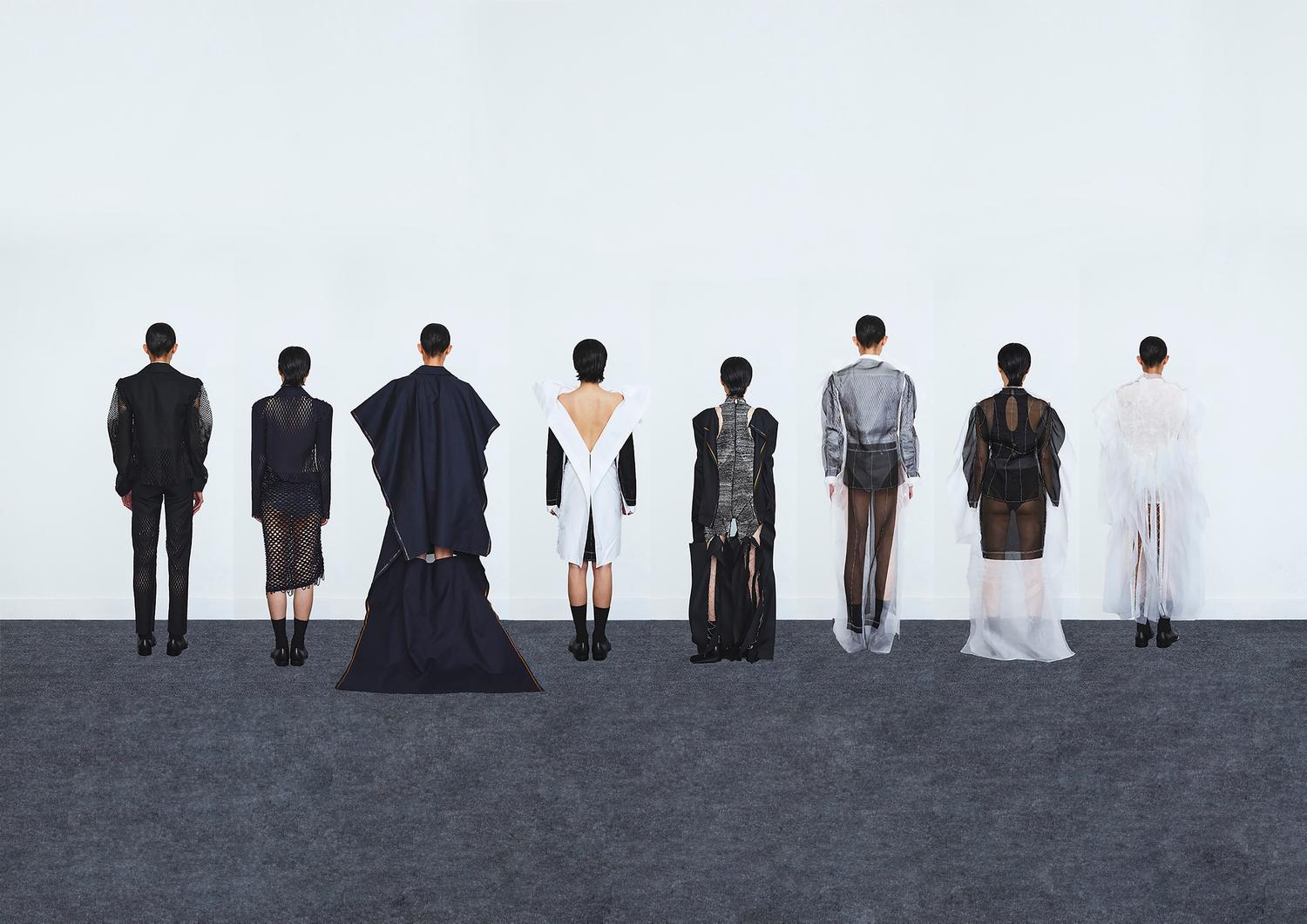
Instagram: @karenheshi
Website: https://karenheshi.co/


